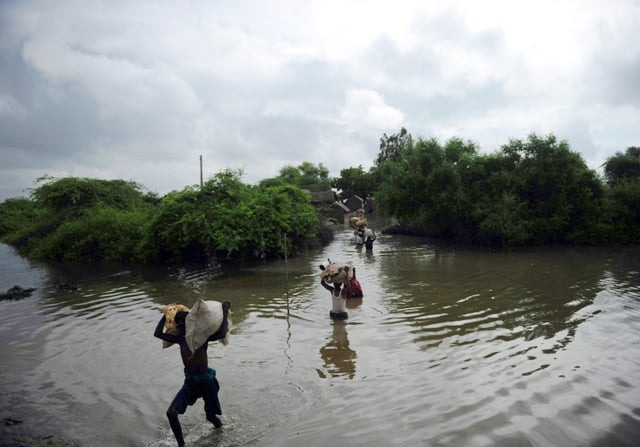Environmental sustainability: Harnessing water resources to protect biodiversity
Ceremony held to celebrate Biodiversity day; Experts propose ways to control flooding.

The RAM also identified pilot project sites for diverting flood water and maintaining natural flows to the Arabian Sea so as to prevent sea intrusion. PHOTO: AFP/FILE
Pakistan needs to improve its floodplain management, consider water conservation and focus on harnessing the power of excessive rains to solve its water crisis, said experts at a ceremony in Islamabad on Wednesday.
The ceremony was organised by the Ministry of Climate Change (MoCC) in collaboration with the World Wildlife Fund (WWF) Pakistan to mark the International Day of Biological Diversity 2013, celebrated annually on May 22. The theme for this year was “Water and Biodiversity.” Interestingly, the United Nations has also marked 2013 as the International Year of Water Cooperation.
Speakers stated that floodplain management incorporates limiting the level of flooding to protect natural habitat and wildlife by ensuring effective flood control regulations and finding ways to protect communities residing in flood-prone areas.
A ‘floodplain’ is an area, bordering a river, which floods with superfluous water from the rivers during flooding season, explained Dr Masood Arshad, senior programme manager of the WWF-Pakistan, to the audience.

Arshad said the British built embankments around rivers in present-day Pakistan to protect adjoining settled areas from excess water, but this model failed to serve its purpose during the 2010 floods. He shared the recommendations of the Ramsar Advisory Mission (RAM) which visited Pakistan in 2012 to study the impact of the 2010 floods and offer suggestions for flood mitigation.
The RAM is an international technical assistance body for resolving problems related to wetlands.
The mission recommended soft engineering solutions to be integrated in the floods management mechanism in addition to “hard engineering” flood responses such as construction of dams and solid embankments.
The soft solutions include restoring the natural flood storage capacity of the floodplain by removing illegal structures and constraining embankments from the floodplains, said Mehmood Nasir, the Inspector General of Forestry at the MoCC. This would allow the passage of high flows during flooding season, he said.
Nasir said China had deployed a similar model successfully to control annual flooding in the Yangtze River.
“We should widen the path of the river’s flow and allow the flood water to spread into the floodplains,” he said. “The excess water will recharge aquifers, replenish underground water reservoirs and even help restore lakes that have become poisonous.”
Nasir suggested Pakistan to look at floods as a “blessing” rather than as a catastrophe and floodplain management should be made a substantial part of the disaster management policy.
The RAM also identified pilot project sites for diverting flood water and maintaining natural flows to the Arabian Sea so as to prevent sea intrusion.
Gul Najam Jamy, the assistant country director of the United Nations Development Programme (UNDP), said Pakistan was a water stressed country where the per capita water availability is decreasing.
Admonishing Pakistan’s national culture of excessive and inefficient water usage, Jamy cited the common practice of flash-flooding of rice paddies by farmers and leakage of water in supply systems.
“Just because we think we have a grand plan to build a big national dam, we shun our daily responsibilities to save water,” he said.
He said governments should take up water harvesting and individuals should also contribute to conserving water resources.
Kowkab Iqbal, a lawyer in Islamabad, said people should be made aware about presence of Green Benches in High Courts so they can move cases against environmental degradations, especially water pollution-related issues.
Children from the Mashal Model School — a welfare learning institute in Nurpur Shahan for underprivileged children — presented a tableau depicting the way human activities such as industrialisation and urbanisation have adversely affected biodiversity and water resources.
Published in The Express Tribune, May 23rd, 2013.



















COMMENTS
Comments are moderated and generally will be posted if they are on-topic and not abusive.
For more information, please see our Comments FAQ